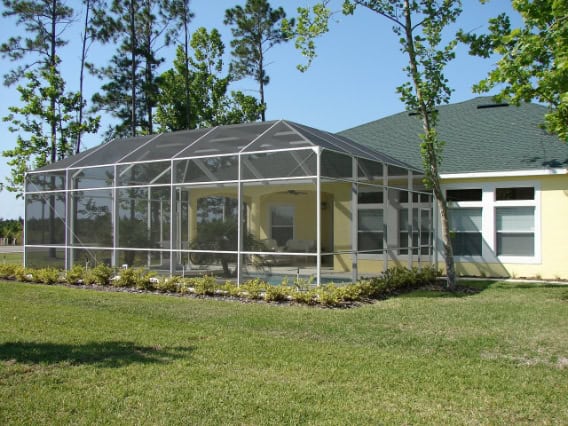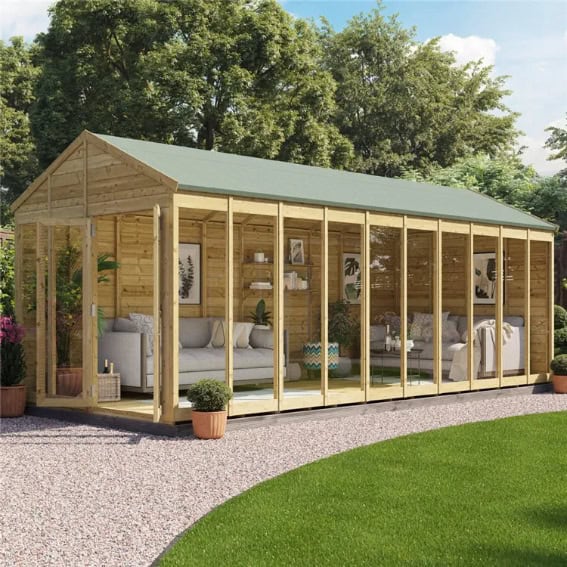Jump to:
If there’s one thing that summer houses and sun rooms have in common, it’s their design to let in as much sunshine as possible. Yet, despite this shared feature, these structures are quite different.
In this guide, we’ll define each and highlight their differences to help you choose the best option for your outdoor space.
What Is a Summer House?
A summer house is a freestanding structure designed for relaxation and entertainment during the warmer months. Although its name suggests summer use, it can, in fact, be enjoyed year-round if it is properly insulated and heated.
The summerhouse’s standout feature is its large, glazed windows, which contribute to its bright and airy interior. This makes it an inviting space to unwind while providing a private retreat, as it is set apart from the main house.
What Is a Sun Room?
A sunroom is a glassed-in room often attached to the side or back of the home, with access from the interior. True to its name, it’s all about maximising sunlight.
This added structure connects the outdoors through an indoor space, such as a house. It’s the perfect addition if you want a spot to enjoy sunrise views, a place to grow houseplants, or simply a glass-enclosed porch or living room with sunny exposure.
Summer House vs Sun Room in Construction
It makes sense that summerhouses and sunrooms have a similar purpose: offering well-lit spaces for leisure. Yet, their differences are in how they are built.
Let’s start with the BillyOh Switch Apex Tongue and Groove Summerhouse model below:
The structure is constructed from wood, with a wooden frame and panels, which are common in most summerhouses. It has large glass windows along the sides and double glass doors, providing an open view and plenty of natural light into the interior. The roof is pitched and covered with green mineral roofing felt. It’s designed as a separate garden retreat rather than an extension of a house.
Now, onto this sunroom:

This is a standard ‘sun house’ structure, built with a metal frame, often aluminium, supporting the glass panels. It’s enclosed with floor-to-ceiling glass windows, sometimes with sliding doors for access. The roof is usually a continuation of the house’s roofline or made from transparent or translucent materials to let in more light. It mainly functions as an extended living space that combines indoor and outdoor areas.
Simply put, the summer house is a standalone structure with a house-like construction but with more glass, while the sunroom is an extension of the main house.
Which One Is Right For You?
In both options, you can unwind in a room filled with natural sunlight. They can have windowed ceilings or walls that are 100% windows if that’s what you prefer. The choice between the two will likely depend on how you want it built into your property. A garden summer house is ideal if you seek a private retreat situated in your garden – but you should also check out other types of garden rooms. Or, a sunroom might be perfect if you wish to expand your living area and make it an integrated part of your home.
You should also consider whether you want the room to offer shade. Sunrooms with fully windowed ceilings are often fully exposed to the sun, and can become too warm to inhabit on hot days. A summerhouse, in contrast, can provide a brightly lit leisure area while not overwhelming you with dazzling light and heat.
Up next on your reading list: 3 Effective Ways to Blend Your Summerhouse into Your Garden











